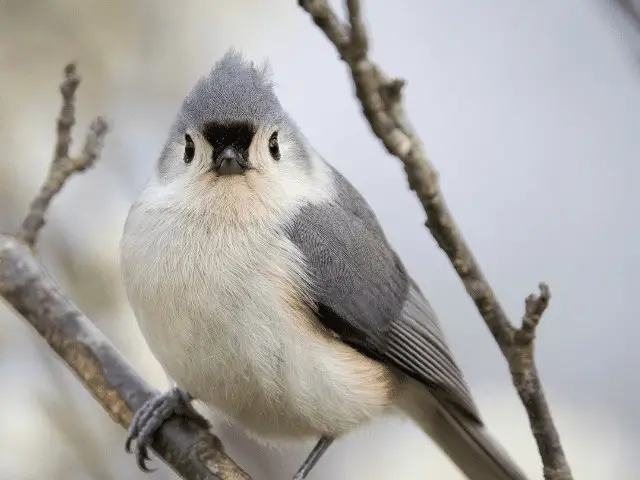Do you know how many birds live in this state? There are over 500 species, which means you'll see a combination of colorful, small, large, predatory, or timid.
The good thing is...
When you know the ones that come to backyard feeders, such as the yellow and black American goldfinch, you can set suet or seeds and watch from your window all day long.
But, other birds will have you spending days in wetlands, woodlands, or shorelines. You'll know more about them as we look at a few birds of Massachusetts.
20 Birds To See In Massachusetts
1. Black-capped Chickadee
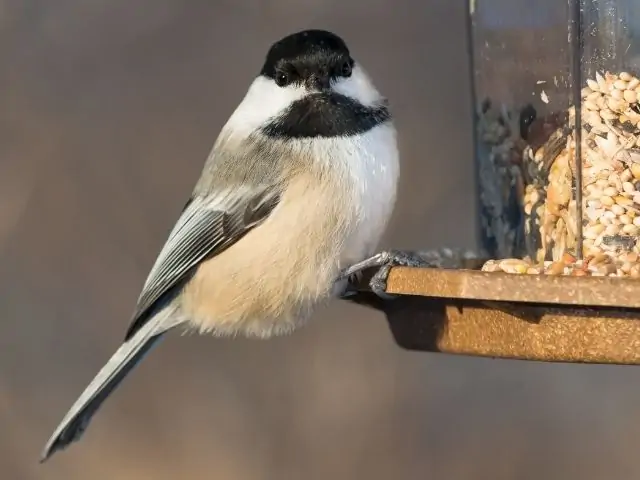
You'll ID this songbird by its small body with gray upperparts, white underparts, a black cap, and bib.
You know, you can make it stay longer in your backyard with a bird feeder.
The black capped chickadee is so social that it won't mind eating seeds from your hand. In the wild, it eats berries, seeds, and insects. Fortunately, there's a year-round population of black capped chickadee in Massachusetts; thus, you can see it any time.
2. Downy Woodpecker
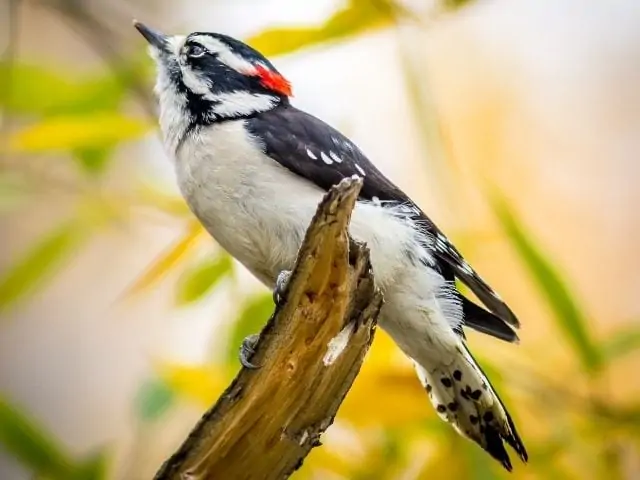
This woodpecker will come to a hummingbird feeder. It'll visit your backyard even in winter if you love feeding birds good rations of worms, nuts, and berries. Its male birds feed on small branches, whereas the females take on large trunks and tree branches.
How big is a downy woodpecker? It's among the smallest birds in the US, with an average length between 5.5 and 6.7 inches. Its plumage is black and white with an iconic red nape.
3. Mourning Dove

Massachusetts is lucky to house a resident population.
When exploring parks and forests to see this species, look for a bird with a long, thin tail, a small head, pink legs, a peach-colored underside, and gray upperparts with black spots.
You may have spotted some doves perched on telephone wires or foraging on the ground looking for seeds.
4. Piping Plover
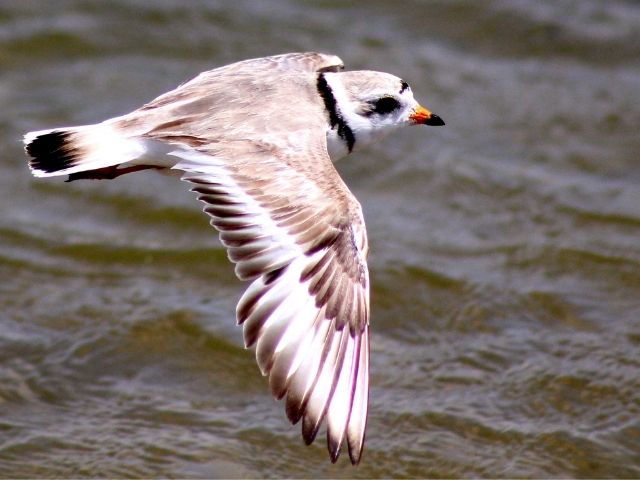
Unlike most birds we'll talk about here, the piping plover only has a breeding population in the eastern part of Massachusetts.
It lives on sandy beaches and the shores of lakes, its gray plumage, and orange legs being excellent camouflage from predators.
If you're lucky to see this shorebird, you'll know it's a piping plover if it has a black bib that extends around its neck. The nonbreeding piping plovers have the same gray upperparts and white underparts without a black bib.
The piping plover is between 6 and 7 inches long, about two inches smaller than the spotted sandpiper, which also loves beaches, lakes, and ponds.
5. Northern Cardinal

Its other name is cardinalis cardinalis, and it's a small songbird between 8.3 and 9.3 inches long.
A northern cardinal's red crest and reddish plumage make it stand out among other birds with the more common black and white plumage. The male northern cardinal has a long tail, a thick, small bill, bright red plumage, and a black mask around the eyes down to its throat.
On the other hand, the female has brownish plumage with red tinges on its long tail, bill, and crest.
Unlike other female songbirds in North America, the female bird can sing and often does so while nesting so the male can know when to bring food.
6. House Finch
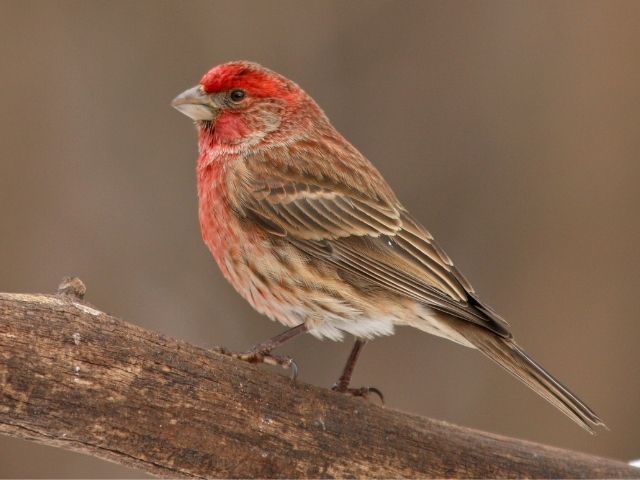
Plus, it's social, so it loves hanging around residential zones. A house finch is about five to six inches long with a wingspan of about ten inches.
The two sexes have different colors, with the male spotting brown, while the female has brownish-gray plumage.
7. Tufted Titmouse
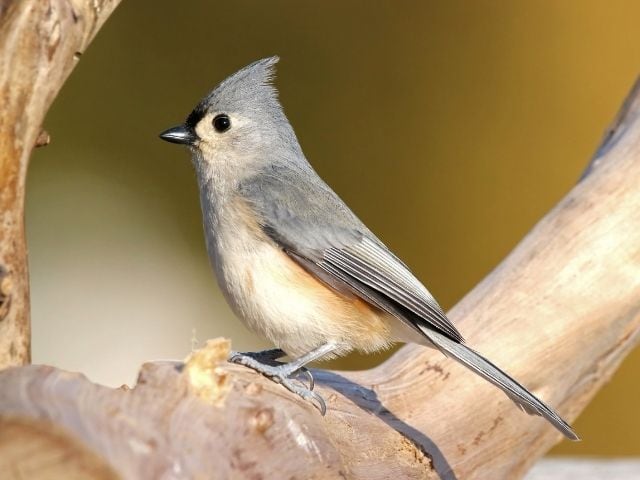
Its length is between 5.6 and 6.2 inches, so it's a small bird. The ID details to put down on your birding journal are black eyes, black forehead, tiny bill, and mohawk crest.
This songbird lives in the eastern states only, so you're lucky to be a birder in Massachusetts.
8. Rough-legged Hawk
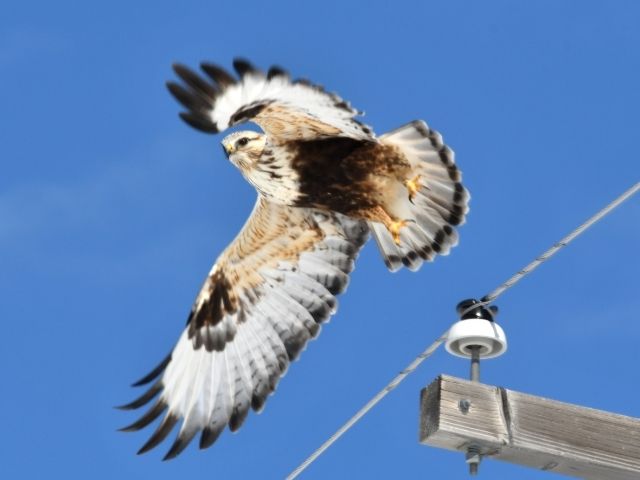
Massachusetts has a resident population of the rough-legged hawk.
But, the rough legged hawk builds nests on cliffs in boreal forests, alpine, and tundra areas.
There are light and dark-colored rough-legged hawks, the same case with the broad winged hawk. Both types have narrow wings, feathered legs, and a dark tip on a white-colored tail.
9. Bald Eagle
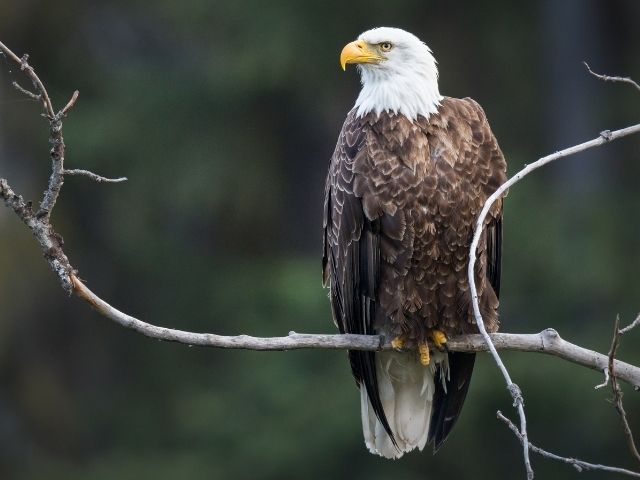
It has a dark brown body contrasting a white head and tail, plus a yellow bill and legs.
The bald eagle lives near water, such as on the shores of rivers, marshes, and lakes. It may also hang around fish processing plants or dumpsters. This eagle eats fish, small mammals, reptiles, and dead birds.
10. Red-shouldered Hawk
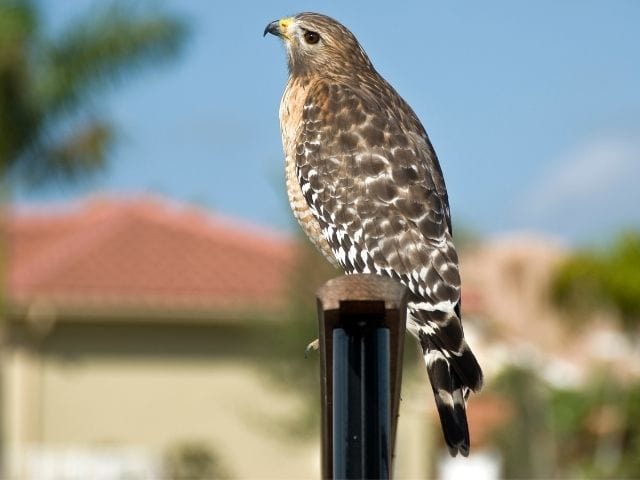
Though the neighboring states have a breeding population, there's a resident flock of red-shouldered hawks in Massachusett.
It's a beauty! It has a set of broad wings with square tips. The underside is reddish-brown, while the flight feathers have stunning black and white bands.
It's not as big as the eagle above since a red shouldered hawk is between 16.9 and 24 inches long. You'll not find it if you go looking for a bird with red-colored shoulders; it has reddish-brown underparts.
11. Snowy Owl
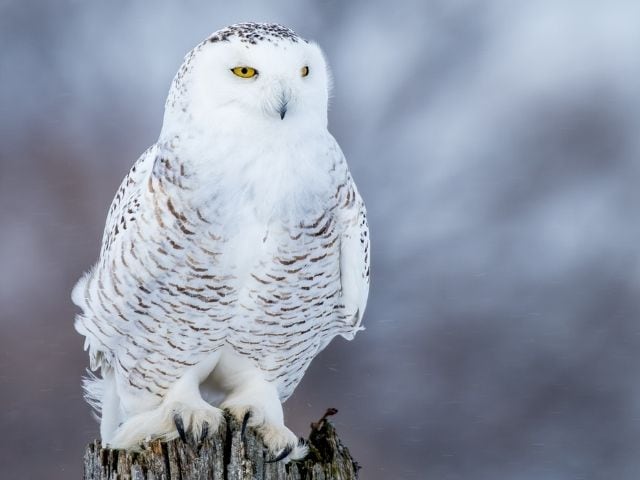
It winters in the northern states, and luckily, Massachusetts is in this range. You'll not get over how unique this owl looks with its white plumage and yellow eyes. Some have brown spots.
In summer, it moves to the Arctic region to hunt ptarmigan and other bird species. This owl is as big as a crow since it grows between 20.5 and 27.9 inches long.
12. Hairy Woodpecker
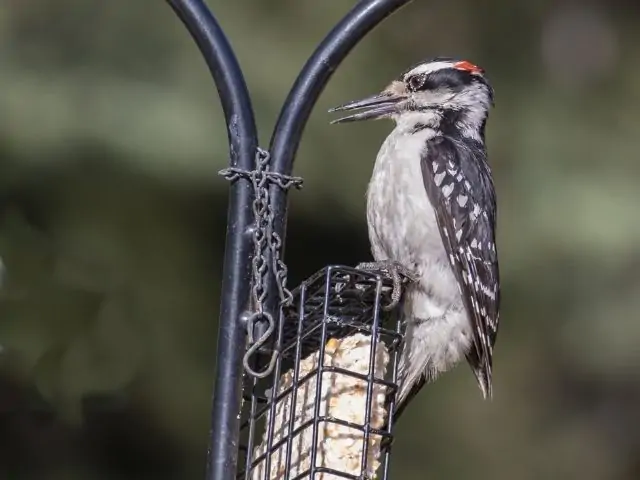
It's bigger than a downy woodpecker, but it has the same plumage colors and pattern. The hairy woodpecker has a sturdy bill that drills trunks to catch insects. It also visits feeders for black oil sunflower seeds.
13. Dark-eyed Junco
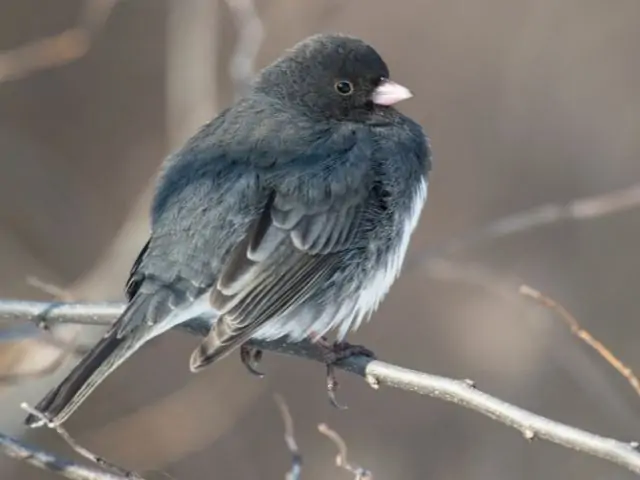
The dark eyed junco is a tiny sparrow with a whitish tail and underbelly, plus a slate-colored head, back, and chest.
These backyard birds live in woodlands. The dark-eyed juncos in western states have a dark brown head, lighter upperparts, and a pale underside.
14. Sharp-shinned Hawk
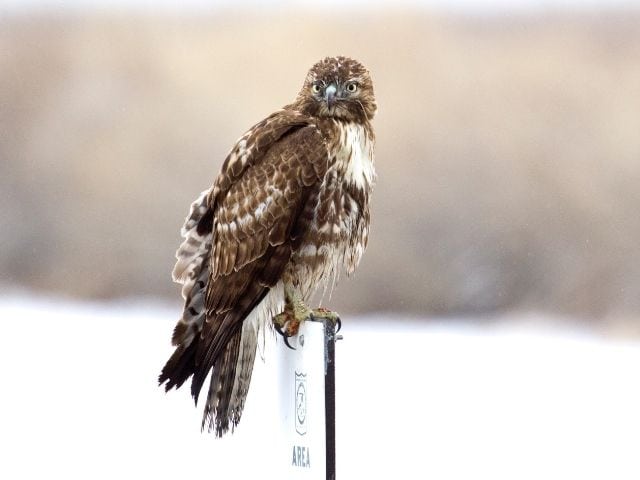
It's more colorful than a rough-legged hawk, though it's the smallest hawk in the US, with a length between 9.4 and 13.4 inches.
The sharp-shinned hawk has a bluish-gray back, reddish-orange bars on a white underside. Its head is small, but it has a long tail and legs to pounce on mice and songbirds. It may visit a bird feeder in winter.
15. Blue Jay
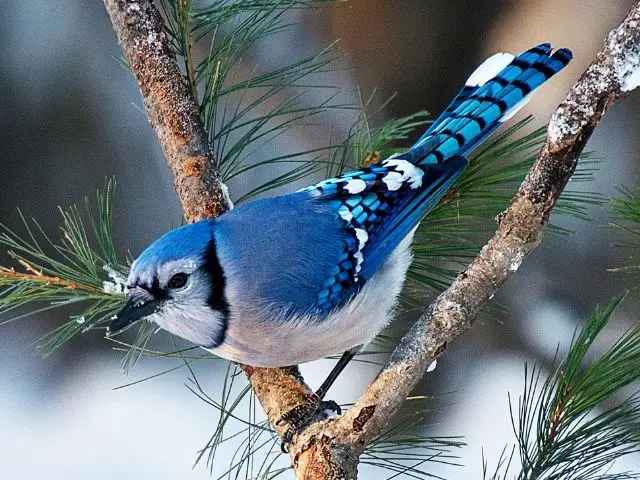
Blue jays are so beautiful with their blue, white, and black feathers. These common backyard birds are noisy, and they have an intricate family system.
Further, this bird loves oak trees; therefore, if you have some trees in your yard, you'll see blue jays looking for acorns. Even in the forest, they settle in places with oaks.
The blue jay is about the size of an American robin as it has a body length between 9.8 and 11.8 inches.
16. Red-winged Blackbird

Once you get enough of the blue and black plumage of the blue jay, contrast it by capturing pictures of the red-winged blackbird. The male's orange and yellow patches are striking against a black body. The female bird has brown-streaked feathers that resemble a sparrow's.
17. House Sparrow
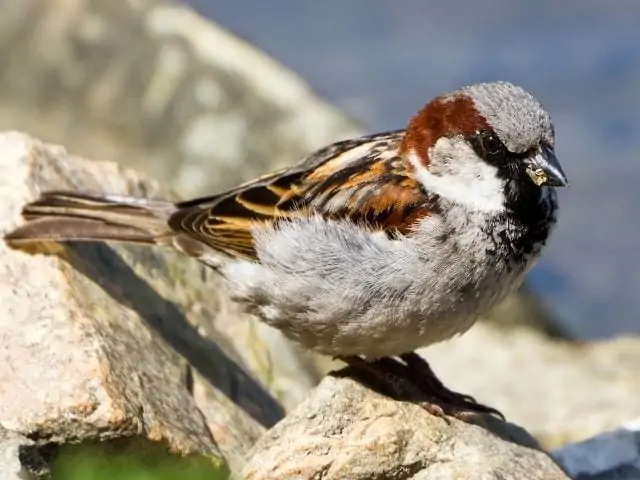
You can find it anywhere in the US all year round, even in human settlements. A house sparrow is two times smaller than a European starling.
A few years ago, a breeding male sparrow sighted in Massachusetts had a black bib, gray crown, and a brown back with black streaks. The nonbreeding species has a yellow bill compared to the black one of the breeding birds.
18. Chipping Sparrow
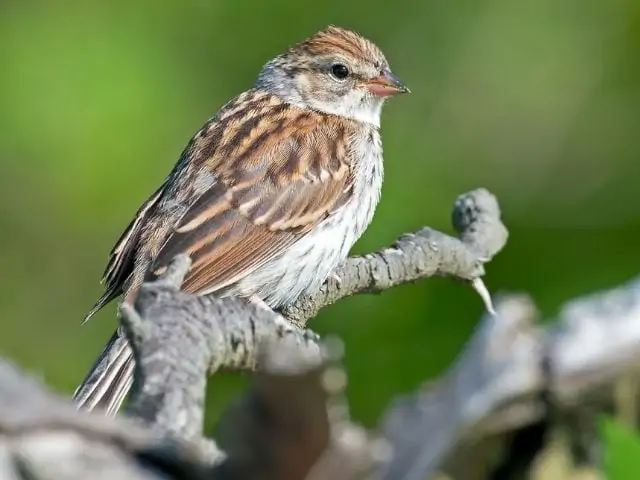
It's a colorful Massachusetts bird with its red crown, a grayish underbelly, and streaked back. The nonbreeding bird is paler but with the same plumage colors.
The chipping sparrow is almost the size of a downy woodpecker as it's between 4.7 and 5.9 inches long.
19. Song Sparrow
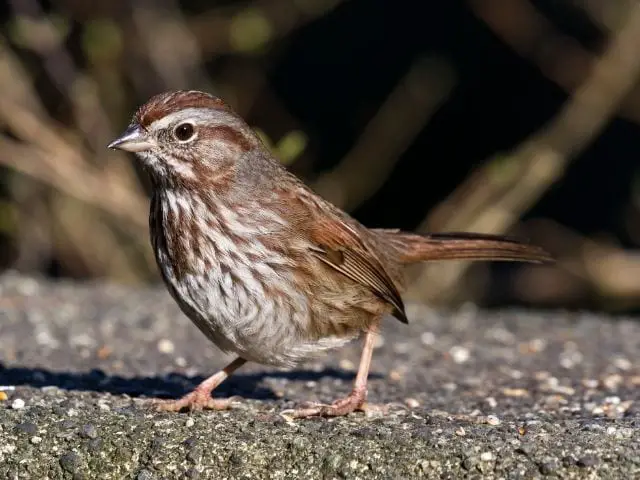
You'll know it by its brown, streaked plumage. Its underbelly is also pale, with brownish streaks on the chest.
There's a resident population of song sparrows in Massachusetts, and they live in open woods, shrubs, and wetlands. The song sparrow grows between 4.7 and 6.7 inches long, with its wing to wing length ranging from 7.1 to 9.4 inches.
20. Eastern Phoebe
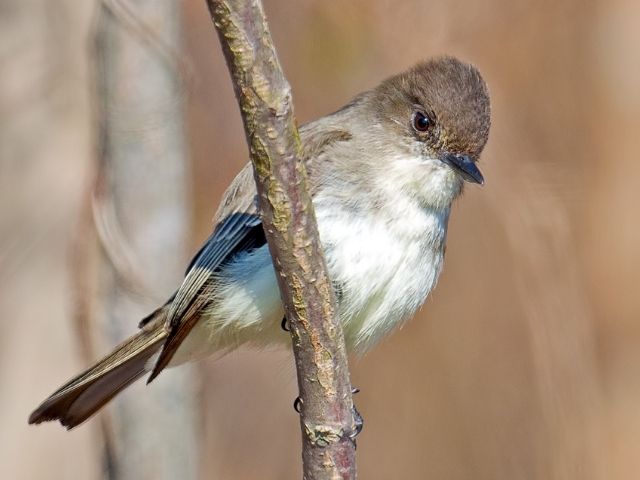
This tiny bird resembles a sparrow, but it's from the passerine family. Therefore, its plumage is different from a sparrow's.
The eastern phoebe grows to about five inches, almost the size of a downy. Its wingspan is about nine inches.
The male bird weighs more, but both sexes have the same length and shape. The bird's chest has gray, white, and brown colors, while its wings and tail combine brown and black.
You'll see it in your backyard if you have a bird feeder because aside from berries, insects, worms, and wild fruits, it also loves birdseed.
Fun Fact: Continue with your adventure with more avian species alongside interesting information by going through our article, "Top 11 Birds Of Utah"!
Now, let's discuss some questions related to birding in this state.
Frequently Asked Questions
What Birds Sing At Night In Massachusetts?
There are so many that entertain you at night, and we can highlight some of them, starting with:
The Northern Mockingbird
This bird species has a resident population in this state, and you'll hear it singing from rooftops, trees, or fences. It imitates other birds, car alarms, creaking doors, dogs, plus mobile ringtones. That's why it's a mockingbird. It sings at night during the breeding season to attract mates.
Here is a video of Northen Mockingbird calling at night:
Barred Owls
You'll also hear barred owls use mournful hooting as a mating call. You may see these birds in pairs or lonesome as they sing for hours well into the night.
Another bird species that'll give you melodious nights are:
The Common Loon
It's the size of a goose, as it grows between 28 and 36 inches with a wingspan of about 5 feet.
Loons can be found all over the state, and they love hanging around lakes and reservoirs. Common loons sing during the day and night, but they are more active at night.
Snowy Egret
It's a migratory bird with a white body, yellow feet, and a black bill and legs. Its aggressive calls during the breeding season resemble nasal squeals and croaking sounds. The snowy egret also makes clicking sounds with its beak to signal aggression.
Have you heard about...
Bobolinks
They'll sing so many songs for you. They are grassland birds, always foraging rice and other grains during migration and winter. Bobolinks' flight call is usually joyous and bubbly, and it signals the flock to migrate.
What Are The Rarest Birds In Massachusetts?
This state has many rare species, some classified as threatened or endangered and others rare. Birders across the state have come across several rare geese like the snow goose, cackling goose, and the greater white-fronted species. Other rare bird sightings include the rufous hummingbird, sandhill crane, and Virginia rail.
The golden-winged warbler, roseate tern, and pied-billed grebe are among the endangered birds. On the other hand, the king rail, vesper sparrow, and northern parula appear on the list of threatened species. Therefore, we can say that most of them will be rare unless something happens to contain habitat loss.
Final Thoughts
If you thought birding in this state wouldn't be worthwhile, now you know exciting times await you. You could even start by following Mass Audubon as a stan to get a comprehensive list of all avian friends you're likely to see and where to go birding to see them.
Your takeaway from our list above is the diversity of species and habitats you'll encounter. Some backyard birds will have you investing in a hopper feeder as they don't like suet, and others will take you across the state to the shores of the Atlantic.

